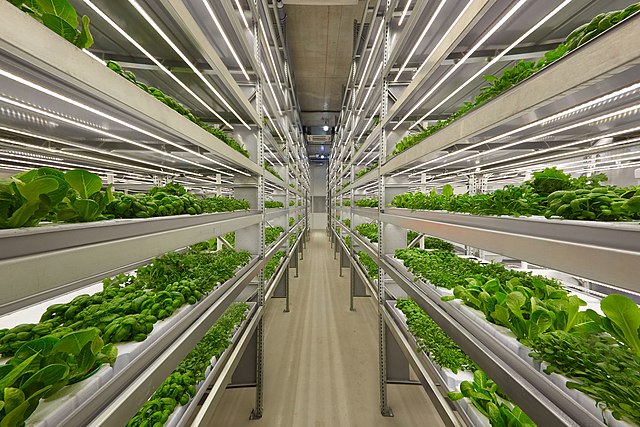Farming in vertical interiors has made the spotlight after startup Plenty Unlimited lost grip from billions in investments into bankruptcy.
With a base in San Francisco, the company plunged into history after filing for Chapter 11 bankruptcy in late March 2025. This despite initial investments running into billions of dollars by Jeff Bezos, Eric Schmidt and others.
While the firm is restructuring via an all-season strawberry farm in Chesterfield County, Virginia (VA), its loss is nevertheless illustrating the industry’s plight.
Plenty could learn from entities that were once in dire straits such as AeroFarms, an indoor lettuce grower with beginnings in 2004.
After filing for Chapter 11 in June 2023, AeroFarms came from behind three months later after restructuring had paid off.
Why is Vertical Agriculture Expensive?
Based on the above examples, it is clear that the vertical agriculture venture can utilize millions in daily operations.
Maximization of little space to grow greens via hydroponic substrates can mean make or break for most urban farming startups.
Plenty’s Chesterfield strawberry farm in VA for example maximizes production in 30-foot vertical spaces. Out of a total 40,000 feet square of space, it manages to grow 4 million strawberry pounds a year.
With the U.S. producing 3 billion pounds of strawberries per year, this means some 1/750th portion comes from Chesterfield.
In case low demand coincides with a year’s harvest, this can mean massive losses for such a scheme.
Another challenge is energy costs, because vertical farms run on artificial intelligence, controlled climate and perpetual lighting. Indeed, in December 2024, Plenty linked high energy costs in California to plans to terminate its Compton vegetable garden.
Firms however can wriggle out of costs through governmental subsidies that support urban farming to combat poor nutrition.
The downside of this method are the cuts on subsidies by such agencies as the Department of Government Efficiency (DOGE).
Furthermore, crops that receive most subsidies are outside the vertical farming sphere of specialty vegetables and fruits. In 2016, corn, soybeans, sugar, cotton, wheat, oranges, pastures and livestock controlled the $9.5 billion in American crop-specific subsidies.
The sure way for vertical farming to thrive is resilient backing by private investors, but even that can fail.
Hence, growing crops by hydroponics in narrow interior spaces can be quite challenging without enough running capital. For a full picture on vertical farming in the world, skim the statistics below.
Global Vertical Farming Statistics
The world of vertical farming is a relatively new phenomenon that took off at the turn of the millennium. Despite 2020s’ disillusionment, the industry had a market worth of $5.7 billion in 2023, according to Fortune Business Insights. The publication also projects the sector to be ten times more valuable than the above in 2032, at $50.1 billion.
Where in the globe is vertical farming most concentrated?
North America leads the global vertical farming market share at 40.88% worth $2.3 billion 2023, up from $1.3 billion dollars in 2021. These values virtually make the region the capital of this artificial farming method.
Why is hydroponics popular?
As a main substrate for growing crops, hydroponics uses only 10% of water that a typical garden needs because it eliminates soil.
Why is vertical farming to be preferred?
According to the U.S. Department of Agriculture (USDA), vertical farming improves yields by 10 to 20 times over typical farming. It also uses 90% less water than conventional farming, a plus for beating drought.
How costly is vertical farming per unit of space?
Using an UK example, CambridgeHOK shows that a 500 square meter space needs at least £1,200 ($1,555) per square meter to operate. A 2,000-square meter space costs maximum £2,000 ($2,591) per square meter while a 10,000 square meter space maximizes at £2,250 ($2,915).
